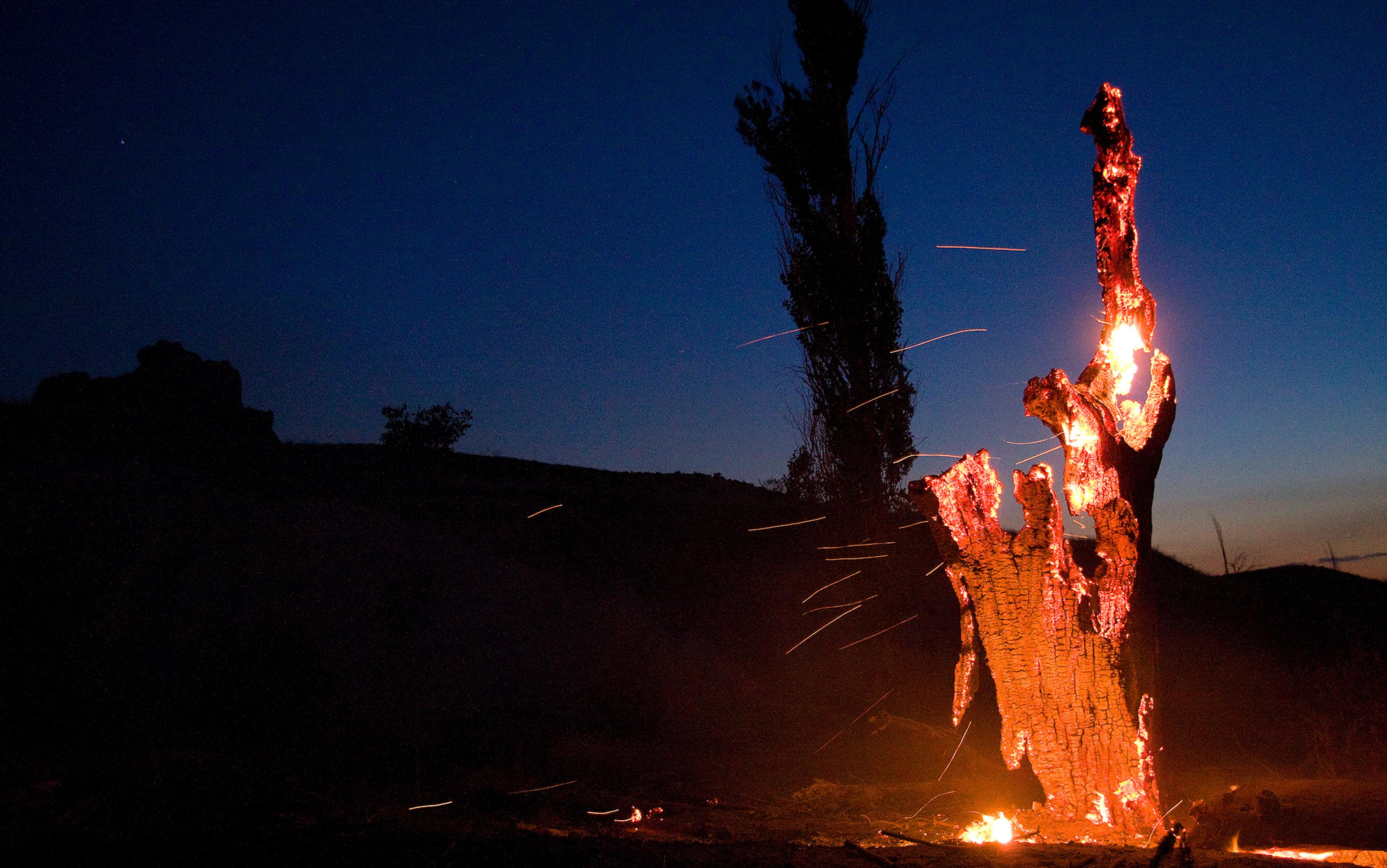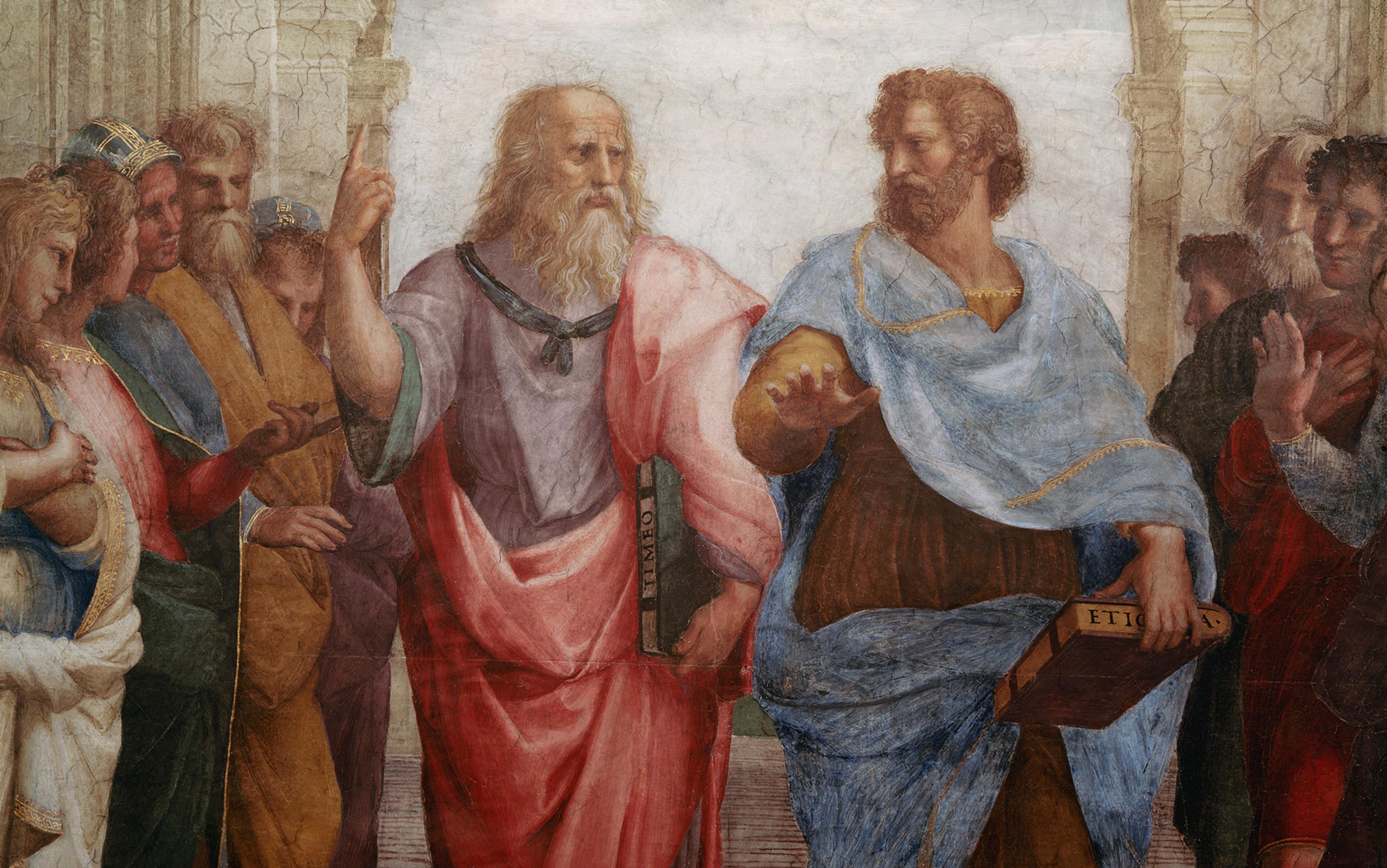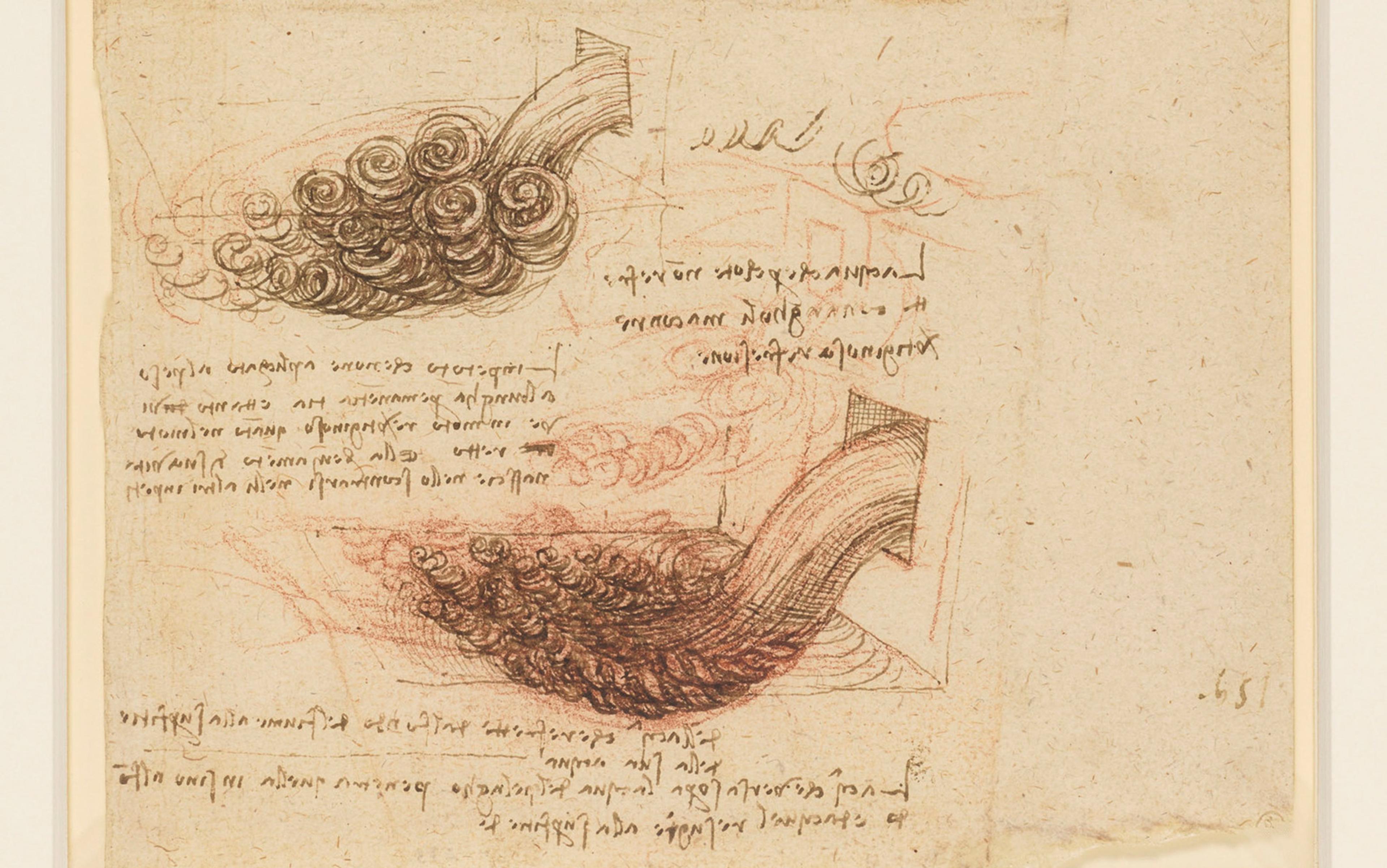Listen to this essay
Reality is not what you think it is. It is not the foundation of our joyful flourishing. It is not an eternally renewing resource, nor something that would, were it not for our excessive intervention and reckless consumption, continue to harmoniously expand into the future. The truth is that reality is not nearly so benevolent. Like everything else that exists – stars, microbes, oil, dolphins, shadows, dust and cities – we are nothing more than cups destined to shatter endlessly through time until there is nothing left to break. This, according to the conclusions of scientists over the past two centuries, is the quiet horror that structures existence itself.
We might think this realisation belongs to the past – a closed chapter of 19th-century science – but we are still living through the consequences of the thermodynamic revolution. Just as the full metaphysical implications of the Copernican revolution took centuries to unfold, we have yet to fully grasp the philosophical and existential consequences of entropic decay. We have yet to conceive of reality as it truly is. Instead, philosophers cling to an ancient idea of the Universe in which everything keeps growing and flourishing. According to this view, existence is good. Reality is good.
But what would our metaphysics and ethics look like if we learned that reality was against us?
Apparently, life flourishes on Earth. Across the vast expanse of evolutionary time, living things seem to have veered toward greater complexity, diversity and abundance. Single-celled organisms gave rise to dense communities of bacteria. Trilobites evolved compound eyes with crystalline lenses of calcite. Animal brains split into two hemispheres, opening new frontiers of thought. Even after five mass extinctions swept the planet, life returned again and again, branching into countless variations of form and function in a ceaseless unfolding of renewal. When we look, we can find this ‘creativity’ all around us: in the weeds forcing their way through cracks in city pavements, in the scent of wet earth as fungi bloom, in the sound of children learning to speak.
Such accounts of life on Earth suggest there is a logic to all this change: the Universe is not static, but always becoming, always moving toward new orders, new complexities, new forms of life and thought. This vision of reality as something generative – perpetually changing for the benefit and flourishing of all it creates – has dominated Western philosophy since its inception. It lies at the heart of our metaphysics (the speculative science of what it means to be), as well as our ethical intuitions and aesthetic ideals. Indeed, from Plato onwards, philosophers have generally agreed that living well means aligning with the rational order of the cosmos. ‘Live in accordance with nature,’ Marcus Aurelius urges in his Meditations. For these thinkers, nature serves as the ethical guide for our actions and the lodestone of our aesthetic ideals because it embodies something good.
Our most excessive actions as a species are perfectly in keeping with the ultimate aims of the Universe
Even in the 21st century, this picture of the Universe informs how we think we should live. It fuels our moral handwringing over the so-called Anthropocene, the notion that our planet has been fundamentally altered by human action. It motivates our attempts to develop ‘sustainable’ environmental policies and drives our escapist fantasies of ‘getting back to nature’. All that is wrong might be put to rights, we think, if only we could find a way to live within the purely creative and inherently benevolent order of existence.
Unfortunately, these long-held assumptions and aspirations are no longer tenable. In fact, our most excessive actions as a species – destroying rainforests, causing widespread extinction, altering the ocean’s chemistry, ‘time-bombing the future’ with forever chemicals and more – are perfectly in keeping with the ultimate aims of the Universe.
Reality, as we now understand, does not tend towards existential flourishing and eternal becoming. Instead, systems collapse, things break down, and time tends irreversibly towards disorder and eventual annihilation. Rather than something to align with, the Universe appears to be fundamentally hostile to our wellbeing.
According to the laws of thermodynamics, all that exists does so solely to consume, destroy and extinguish, and in this way to accelerate the slide toward cosmic obliteration. For these reasons, the thermodynamic revolution in our understanding of the order and operation of reality is more than a scientific development. It is also more than a simple revision of our understanding of the flow of heat, and it does more than help us design more efficient engines. It ruptures our commonly held beliefs concerning the nature and value of existence, and it demands a new metaphysics, bold new ethical principles and alternative aesthetic models.
The thermodynamic revolution did not emerge from any single event or discovery. It grew from slow, painstaking research into the operation of engines and heat in the 18th and 19th centuries. The seeds were first sown around 1712, when the Baptist preacher and ironmonger Thomas Newcomen built a new kind of machine: a clanking, hissing steam engine designed to pump water from flooded coal mines. Fifty years later, the Scottish engineer James Watt reimagined Newcomen’s design, dramatically improving its efficiency. Watt’s heat-powered engine spread rapidly across Europe and beyond, driving factories, ships and locomotives. Yet its operation remained mysterious: how could something as intangible as heat be transformed into mechanical motion? And why did this conversion obey fixed limits, no matter how refined the engine?
In the 19th century, the French physicist and military engineer Nicolas Léonard Sadi Carnot, the so-called ‘father of thermodynamics’, defined the first of the underlying laws governing the flow of heat (now counted as the second law of thermodynamics). Through his contributions, the study of heat exchange was formalised as an area of scientific enquiry. The research was later systematised by Rudolf Clausius and William Thomson, the 1st Baron of Kelvin, and eventually completed by James Clerk Maxwell, Ludwig Boltzmann and J Willard Gibbs.
Through their exhaustive labour, the statistical methods needed to measure heat exchange were clarified and perfected. In the 20th century, the full set of the formal laws of thermodynamics were finally established. Since then, every branch of the natural sciences has come to rely on those laws to explain the transformation and operation of energy in and between its various forms: mechanical, acoustic, thermal, chemical, electrical, nuclear, electromagnetic, and radiant. Today, these laws underlie our entire account of reality and are used to explain everything from the origins of life to the end of the Universe as a whole. This steady application of thermodynamics across the natural sciences is what has led to its revolutionary status in our contemporary understanding of reality.
The first of these laws is known as the law of the conservation of energy. It states that energy (whether in the form of motion, matter or heat) can only ever change states. It cannot, in other words, be created or destroyed. That means the total amount of energy within a system is ultimately constant, even when it appears to lessen due to the dissipation of matter, the slowing of movement, or cooling. In these cases, the energy has just taken a different form. It was from this law that Albert Einstein derived his equation governing the conversion of matter into energy: E = mc². And it is through the extension of this law that we can predict the productive power of every ‘heat engine’ that exists, from the relatively small motors that sputter away inside our cars to the largest stars, twinkling light years from Earth.
The distant fate of our cosmos is a state in which all energy will have been effectively exhausted
The second law states that the energy within any given system – whether complex and material or simple and radiant – moves in such a way that it becomes less organised and concentrated over time. This tendency towards disorder, known as entropy, means that the energy flow within any given system tends steadily towards a state of absolute equilibrium in which no one thing possesses any more or less energy than any other thing. This is the law physicists use to explain why, in the words of William Butler Yeats, ‘things fall apart’. It is also used to explain material differences between the past, the present and the future, which helps us understand why we experience time moving in only one direction: towards disintegration, which is just another way of saying ‘energy distribution’. Hence our reasonable expectation to see cups that have fallen from a table to shatter into smaller pieces but we can never expect to see, in the words of Stephen Hawking, ‘broken cups gathering themselves together off the floor and jumping back onto the table.’ The second law of thermodynamics guarantees that as time moves forward everything must eventually ‘shatter’, like Hawking’s tea cup, into increasingly smaller pieces until it is all broken and we cannot reasonably hope that it could ever be repaired.
The third law of thermodynamics concludes that, since entropy increases over time, the only logical end to perpetual dissipation is a state in which every existent thing possesses the lowest total amount of energy possible. This state, known as ‘absolute zero’, is defined as a condition in which no more energy exchange can occur. The ultimate expression of absolute zero is a system in which there are no complex forms of energy at all, only an even distribution of low-level background radiation. In this near-absolute emptiness, no ‘thing’ can be said to exist, and even the possibility of change is nullified. It is this law that allows contemporary physicists to confidently assert that, while energy can neither be created nor destroyed (in keeping with the first law of thermodynamics), it can nevertheless ‘burn out’. Things in this state have no effective mechanical power, cannot demonstrate any motion or change, and cannot maintain the minimum conditions for the existence of tangible objecthood itself (ie, chemical bonding). Using this law, contemporary astrophysics have concluded that the distant fate of our cosmos is a state in which all energy will have been effectively exhausted, dissipated or spread too thin to have any practical potency – a time known as the cosmological ‘dark era’.
A final law, now known as the ‘zeroth’ law, was later added to the first three basic laws. The ‘zeroth’ law establishes a consistent definition of temperature between systems, regardless of their relative entropic position in relation to absolute zero. But the substantive power of the thermodynamic revolution already existed in the first three laws. It is from the extension and application of these basic discoveries that contemporary scientists have completely revised our understanding of the origin, order, operation and end of everything.
According to the physicist Carlo Rovelli, the influence of these laws has been so pervasive that the history of scientific development in the past two centuries might be recounted as little more than the extension of thermodynamics into nearly every branch of the natural sciences. As a result, he notes in Seven Brief Lessons on Physics (2014), the laws of thermodynamics are now recognised as the foundation of the other laws used in those branches. And so, the same basic laws that were first used to improve the efficiency of steam engines are now seen as the singular regulating principle of ‘all material systems’, as the biochemist Addy Pross puts it in What Is Life? (2012).
The acceptance of thermodynamics is so complete that Einstein believed it constituted ‘the only physical theory of universal content concerning which I am convinced that, within the framework of the applicability of its basic concepts, it will never be overthrown.’ He believed the laws of thermodynamics to be the ‘firm and definitive foundation for all physics, indeed for the whole of natural science.’
Through these laws, contemporary astrophysicists have been able to speculatively reconstruct the birth of our cosmos roughly 13.7 billion years ago and to speculatively account for the eventual collapse of our universe at the distant end of time. On a much smaller scale, biochemists and biophysicists have employed the laws of thermodynamics to explain how organic life first emerged from inorganic matter and why all living things must die.
Never have we had a more complete picture of reality than we do today. We now know that all we are and all that we do, indeed, all that anything can ever do, is entirely defined and circumscribed by the tendency towards entropic decay. The laws of thermodynamics encompass the whole of reality, from beginning to end, top to bottom, in origin, order and operation. We exist by virtue of heat exchange alone, and work entirely in service to the entropic decay of reality prescribed by that exchange.
Philosophers have been somewhat slow to address the thermodynamic revolution. Perhaps this is because contemporary philosophy is no longer content to be led by the methods and discoveries of the mathematical and material sciences.
In the past, philosophical metaphysics and the natural sciences circled one another like partners in an elaborate dance, each leaning upon the other and at times pushing or pulling its partner along as they both attempted to step lively to the rhythm of reality. Since Pythagoras, who is traditionally recognised as the first to coin the word philosophy, the natural and mathematical sciences were posited as the proper guide and escort of this complicated dance. Hence Plato’s enjoinder that those who sought to study the true form of being in his Academy must first familiarise themselves with mathematics and their practical application in the natural sciences. Supposedly, the inscription above the entrance to his Academy read: ‘Let no one enter who is ignorant of the study of geometry.’
The idea that philosophical speculation should be led by the mathematical and scientific survey of material reality governed metaphysics for the next 2,000 years, with few exceptions. However, in the past two centuries, a split has appeared between the mathematical and scientific study of the natural world and philosophical metaphysics. There are some notable exceptions to this general trend: philosophers who have earnestly endeavoured to keep up with the work of the natural sciences and to derive new metaphysical claims from this partnership.
The metaphysical, ethical and aesthetic implications of the thermodynamic revolution remain largely unexamined
Consider Friedrich Nietzsche, one of the first thinkers of the 19th century who saw the emerging thermodynamic revolution as a pathway to a new vision of the cosmos. What he saw was neither good nor evil, but simply a ‘monster of energy, without beginning, without end; a firm, iron magnitude of force that does not grow bigger or smaller, that does not expend itself but only transforms.’ However, Nietzsche seems to have overlooked the second and third laws of thermodynamics, which complicates (or nullifies) his optimism in the infinite creative potency of reality. The same could not be said for his contemporary Philipp Mainländer, who drew upon all three of the laws of thermodynamics to establish a metaphysical foundation for a new pessimistic philosophy. In the inevitable decay and destruction, Mainländer saw a new basis for the moral resignation and quietism dominating German intellectual circles at the time.
In the 20th century, thinkers like Isabelle Stengers and Bernard Stiegler have drawn upon the insights of the thermodynamic revolution to argue for what the former sees as the fundamental indeterminacy of reality and what the latter argues is the driving force of social and political developments since the Industrial Revolution. More recently, in the 21st century, Shannon Mussett has turned to the laws of thermodynamics to call for a new ‘ethics of care’ for our planet and for one another, which, she argues in Entropic Philosophy: Chaos, Breakdown, and Creation (2022), is justified in light of the necessary ‘fragility’ and ‘finitude’ of our entropic reality.
While such attempts to reckon with the existential implications of the thermodynamic revolution are significant, each has either failed to grasp its full philosophical significance or has neglected to develop a systematic account of reality grounded in this understanding. The philosophical task of reckoning with the full significance of the thermodynamic revolution therefore remains unfinished. But this is not unusual. Similar delays followed earlier scientific revolutions. Consider how Copernicus’s discovery that Earth orbits the Sun, published in the mid-16th century, remained largely undigested by philosophy until Immanuel Kant reframed it as a model for metaphysical thought in the late 18th century. In the same way, although the empirical content of the thermodynamic revolution has been absorbed by the sciences, its metaphysical, ethical and aesthetic implications remain largely unexamined. The task now is to continue this work.
For the better part of a decade, I have been reflecting on these oversights, attempting to reckon with the picture of reality granted to us by the thermodynamic revolution.
We must start by admitting that the Universe is finite and will eventually end. Moreover, we must accept that the function of the Universe is to hasten this extinction. The laws of thermodynamics reveal, in other words, that what we might view as the generative power of the Universe is instead bringing about the annihilation of everything: the flourishing of life is always contributing to the eventual collapse of the cosmos.
Even our Sun consumes itself in pursuit of this obliteration. When it dies in roughly 5 billion years, it will expand so much that Earth will be incinerated, and the solar system as we know it will come to an end. Until then, the Sun’s radiant energy will be collected and aggregated by plants that use it to further break down the latent chemical and material energy of our planet. The result of this photosynthetic process, leafy growth, is nothing more than a small contribution to the destruction of our planet. That means kale, spinach and lettuce are fractionally hastening the dissolution of Earth. And when we harvest, clean, eat and digest these entropic agents in the hope of sustaining ourselves, we only contribute further to the breakdown and dissipation of energy in our local environment. The theoretical physicist Sean Carroll has thus concluded that the ‘purpose of life’, from a thermodynamic perspective, might be summed up in a single word: metabolism, which he defines in The Big Picture (2016), as ‘essentially, “burning fuel”’. And to that end, as the biochemist Nick Lane puts it in The Vital Question (2016): ‘Life is not much like a candle; more of a rocket launcher.’
A metaphysics that responds to the full scope of the thermodynamic revolution needs to acknowledge the dissipative and destructive function lying behind the ‘generative’ force seemingly at work within reality. To do so requires moving from the classical optimistic metaphysics of becoming to a much more pessimistic metaphysics of absolute finitude and inescapable unbecoming: a metaphysics that reconceives of beings as nothing more than dissipative cogs in an annihilative machine.
From our human perspective, beings like ourselves might appear to proliferate and grow in complexity, seemingly working against the flow of entropy through the processes of birth, growth and regeneration. But in the fullness of time, this apparent generation and growth looks very different.
We can no longer think of existence as something organised towards our flourishing
Life is perhaps the most effective, albeit least obvious, consequence of and agent for thermodynamic decay in our immediate system, as the biophysicist Jeremy England has shown in his lab and the biologist Lynn Margulis has confirmed in field research with her son, Dorion Sagan. Everything in existence, including our species, both arises from and works in service to the destructive order of reality. Decay, it seems, is the ultimate essence of existence, which means that our being must be understood as a mode of unbecoming. It is but one additional way in which the ultimate annihilation of the Universe is accomplished.
A thermodynamically informed metaphysics of unbecoming demands that we also reconsider the moral value of the Universe. After all, if being is exclusively and entirely in the service of this unbecoming, we can no longer think of existence as something organised towards our flourishing. Reality is not good for us, as Plato and other philosophers insist. Instead, existence is fundamentally antagonistic and is actively working against itself in pursuit of total extinction. This is no kind of good.
Everything eats and is eaten. Everything destroys and is destroyed. Such is the inextricable order of the Universe. To sustain ourselves, we must consume and, in doing so, absorb, break down and dissipate our immediate surroundings in a process that necessarily contributes to their demise and our own. Such is the purpose, the metabolic function, of our lives from a thermodynamic perspective.
If any ethical meaning can be derived from what we now know concerning the nature of reality, it must be extracted from the fact that we are complicit in the universal unbecoming of our cosmos and exist solely to destroy our environs and ourselves in the process. It must also acknowledge the fact that, to the extent that any being has the distinct misfortune of being able to sense and respond to their thermodynamic destiny, they are doomed to experience rot, ruin, sickness and death: in a word, suffering.
No longer can we conceive of existence as something that is ultimately good. Nor can we conceive of it as something that is morally neutral, as others might have it. Instead, we must acknowledge that reality – which is organised antagonistically against all that it creates, and is the direct cause of the suffering of every entity it endows with consciousness – might be morally evil. If our existence means being forever at war with ourselves and our environs, and actively contributing to the suffering of everything we encounter along the way, then it is decidedly not good to be. Life is a moral catastrophe. To exist is to be unavoidably complicit in an order that is entirely evil.
What are we to do about this moral fact? Should we retire from existence as quickly and as peacefully as possible? Or is there another way? Could we, for example, begin to think of goodness not as something that exists in its own right, but that exists in relation to the moral order of the Universe and is defined negatively against the grain of the cosmos? Would goodness, then, be any attempt to resist the order, operation and end of reality?
If being complicit in the destructive flow of the Universe is evil, then goodness might be redefined as that which resists the nature and structure of reality, however futilely. Goodness could consist in any act that seeks, however briefly, to bend the entropic thrust of existence back upon itself – holding it at bay, even if only momentarily. We glimpse this resistance in acts of compassionate care for the suffering, and in efforts to minimise the harm we inflict on the world around us. Such efforts include adopting ways of living that reduce our consumption of the planet’s resources or, at the very least, lessen the suffering bound up in that consumption – through veganism, vegetarianism, or the choice to eat only animals raised in more humane and healthy conditions.
There are many ways in which we can further envision such an ethics of resistance, both personally and politically. Some of these we might unknowingly be doing already. Consider, for example, the practice of medicine that, while fully acknowledging the ultimate destiny of life (ie, death), nevertheless strives with tireless passion to delay the arrival of that destiny for as long as possible and to prescribe lifestyles that will enhance the quality of life in the meantime. This is a rather obvious good. What is less intuitive is that such efforts do not work in concert with nature. Medicine is not a way of affirming the intended direction of life and existence, and yet we think of the work that doctors do as ‘good’. What makes it good is precisely that it attempts to forestall, delay, slow down or put off what nature destines. In a similar way, every effort to work against and resist the entropic flow of reality must also count as good.
We should never strive to live in harmony with nature. To do so would make us complicit in an entirely evil system
Of course, all such efforts ultimately serve the entropic collapse of reality. If anything, by prolonging life, medicine ultimately increases the overall entropic potential of our planet – more people mean more bodies ‘burning fuel’. But it is in our efforts, not in our successes that we must look for moral goodness; in the same way that it is in our efforts to raise healthy and happy children that our success as parents must be judged, not our capacity to achieve these aims. Similarly, it can only be through our attempts to resist nature, to resist the entropic collapse of reality, that our standards of goodness might be set, not whether they are actually achievable.
Once we understand goodness as something that can be achieved only by resisting the order and operation of the cosmos in this way, we can begin to articulate an ethical system that takes seriously the insights of the thermodynamic revolution. To do good is not to work in concert with reality, nor should we ever strive to live in harmony with nature. This would make us complicit in an entirely evil system. To do good is to break with that complicity – to seek ways of dismantling, resisting and reconfiguring the structure of reality to neutralise, alleviate or unsettle its entropic thrust. Only by pursuing goodness negatively, through acts of refusal and resistance, can we hope to animate a new ethics within the metaphysics of decay.
Ultimately, such ethical pursuits are doomed. In a universe ruled by the laws of thermodynamics, all efforts to preserve life or protect sentient beings from nature’s destructive drift are destined to fail. This, however, should not prevent us from resisting.
What, then, are we to do? The only ‘ought’ we can tentatively derive from the vision of reality revealed by the thermodynamic revolution is this: it is our duty to strike back at the Universe. For it is precisely in the possibility of retaliating against the moral horror of existence that new ethical imperatives and aesthetic insights might be forged. Only by striving to break free from reality’s malign grip can we shape an ethics and aesthetics from the bleak metaphysics of entropic decay laid bare by contemporary science.
If you enjoyed this Essay, Drew Dalton further explores these ideas in his book The Matter of Evil: From Speculative Realism to Ethical Pessimism (2023). Of the connection between his book and the Essay, Drew said: ‘My piece for Aeon grew from a desire to summarise, crystalise, and make clear for a wider audience one of the more startling conclusions from my book. Like the shorter piece that grew from it, the aim of that longer work was to familiarise readers with the thermodynamic revolution that took place during the 19th and 20th centuries, and to show how moral conclusions might be speculatively extracted from it. However, I first had to challenge several prevailing philosophical prejudices, particularly the logical prohibition against deriving ethical “oughts” from that which merely “is”. This required taking on a mode of philosophical argumentation that can be alienating to even the most specialised academic. Writing for Aeon gave me the chance to take a step back from this technical mode and return, straightforwardly, to the startlingly simple revelation which inspired it: in the 20th century, the laws of thermodynamics were extended into the realm of biology, showing that life itself is entirely explainable by way of entropic collapse. This fact challenges our traditional assessment of the nature, structure, operation, function, aim, and end of life. It therefore also challenges, as my Aeon essay argues, the moral value of life as well.’






